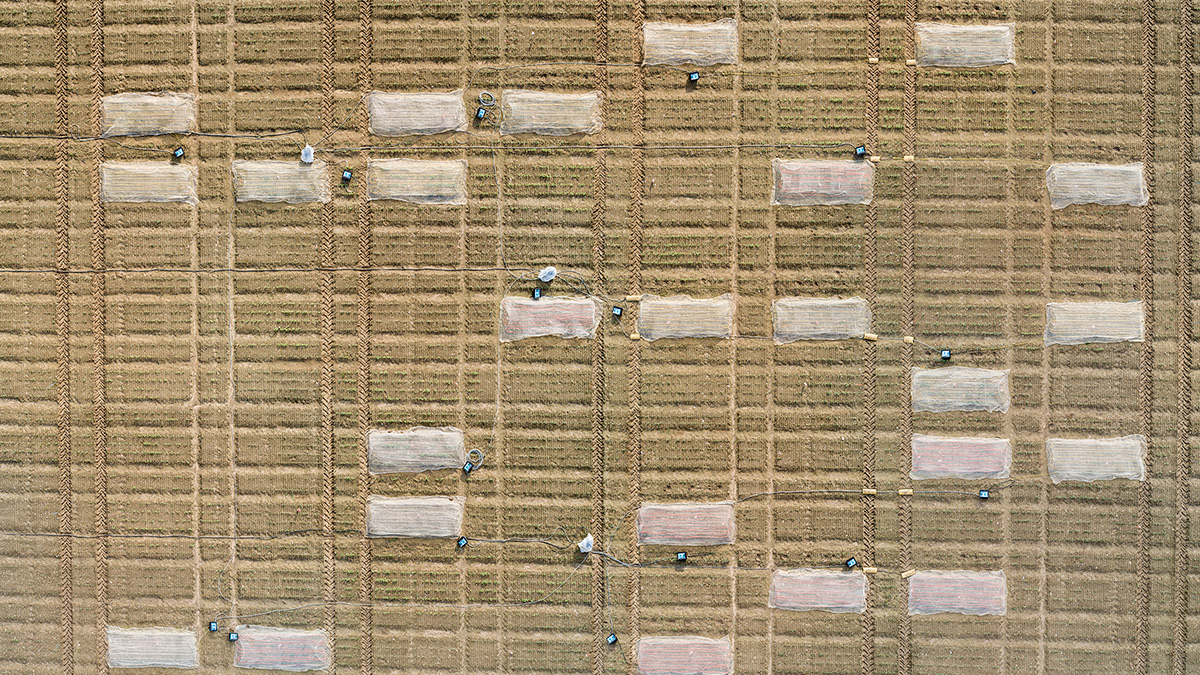There’s a reason sci-fi stasis pods are often icy: Biology tends to slow down when it’s cold and speed up when it’s warm.
By this logic, higher temperatures should boost plant growth. But the warmer winters brought on by climate change actually seem to hurt yields for many crops. And scientists now have a better idea why.
Annual crops need frosty periods to break out of their winter dormancy, reveal results published in the Proceedings of the National Academy of Sciences of the United States of America. Researchers grew winter oilseed rape, or canola, in temperature-controlled chambers and farm plots and found that the plant goes through a hibernation-like state that “breaks” only if the plants are sufficiently chilled.
The new results highlight how climate change can shake up the finely tuned feedback systems linking life and the environment.
“One of the main footprints of climate change is…the timing of biological events, like flowering in this case,” said ecologist Johanna Schmitt of the University of California, Davis, who was not involved in the new research. Such events are “a big deal for ecosystems, the fitness of plant populations, and in this case for crop yields.”
Getting the Timing Right
Perennial plants like trees and bushes stay in the ground for more than two growing cycles (usually measured in years). To protect their developing buds from winter frosts, perennials enter a dormant state once things start getting chilly. This state is called “bud dormancy,” and it’s a critical adaption to seasonal climates.
Plants need to be very careful not to “wake up” from bud dormancy too early. Mistaking a few warm autumn days for spring could have deadly consequences.
But there’s a catch: Plants need to be very careful not to “wake up” from bud dormancy too early. Mistaking a few warm autumn days for spring could have deadly consequences.
Getting bud dormancy right means working against biophysics. Generally speaking, warmer temperatures speed up biology and boost growth, whereas colder temperatures do the opposite. But bud dormancy works against this tendency, explained plant biologist Steven Penfield of the John Innes Centre in Norwich, United Kingdom, who led the new study.
“The normal relationship between temperature and plant growth is completely reversed” during bud dormancy, Penfield said. “This is the trick plants have evolved.”
During bud dormancy, plants slow down when it’s warm and speed up when it’s chilly. Dormancy breaks only once plants spend enough time at cold enough temperatures. This keeps them safe until spring actually arrives.
Bud Dormancy in Annual Crops
Annual plants stay in the ground for only 1 year or less, so many don’t bother surviving the winter at all. But “winter annuals,” planted in late summer or early autumn, delay flowering until spring and need cold to develop properly.
Previous studies had linked warmer winters to lower yields in winter annual crops like winter wheat and winter oilseed rape, but the relationship wasn’t clear. Penfield and his team wondered if bud dormancy might be the answer.
To find out, the team grew winter oilseed rape and watched what happened when they put the plants through simulated warmer winters.
In the lab, the researchers used climate-controlled growth chambers about the size of an office to grow their plants, which they programmed with weather station data to mimic a real farm in northern England. They also ran experiments in the field with temperature-controlled plots.
The results in both cases were the same: The plants that experienced warmer winters had worse yields.
A closer look at the plants, including an analysis of how they turned key dormancy-related genes on and off during the winter, revealed that the lower yield really was linked to flower bud dormancy, a life stage not previously recognized in annuals.
The new results don’t “just show a direct correlation between a measured increase in temperature and reduced yield—it’s been explained why” the correlation exists, said plant developmental biologist Pilar Cubas of the National Centre for Biotechnology in Spain. “It could give us some ideas of how to sort out this problem.”
Climate Change Scrambles Environmental Signals
Bud dormancy is just one of many ways plants have evolved to perceive and respond to cues in their environments. Being able to notice those cues helps plants survive, but climate change is scrambling the signals.
Bud dormancy is just one of many ways plants have evolved to perceive and respond to cues in their environments. Being able to notice those cues helps plants survive, but climate change is scrambling the signals.
In a warmer climate, some events plants use to time their growth aren’t coming at the expected time. They sometimes don’t even come at all.
“What’s happening with climate change is now there’s a mismatch, so a formerly adaptive cue is no longer adaptive,” said Schmitt. “I saw this actually in our nectarine tree in our backyard in Davis one year: They just didn’t accumulate enough chilling units, and they didn’t really do much that spring. They [only] had a few deformed buds.”
Penfield said his group’s experiments in growing diverse varieties of oilseed rape offer hope that breeding plants better suited to warmer winters may be possible. Understanding dormancy could help.
It’s less clear how wild plants will cope.
“The really big question,” asked Schmitt, “is are our natural plant populations going to be able to keep up with climate change?”
—Elise Cutts (@elisecutts), Science Writer
This news article is included in our ENGAGE resource for educators seeking science news for their classroom lessons. Browse all ENGAGE articles, and share with your fellow educators how you integrated the article into an activity in the comments section below.


